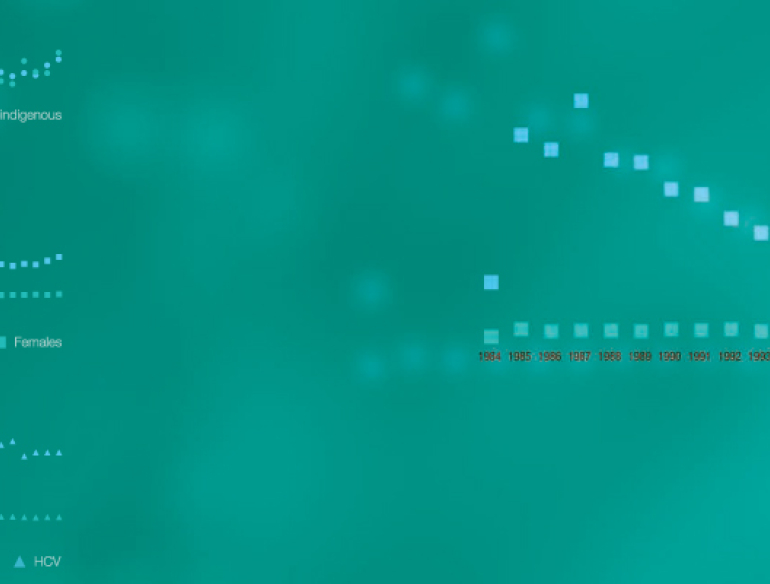Key findings
- A total of 1,253 cases of HIV infection was newly diagnosed in Australia in 2012, a 10% increase over the number in 2011. The annual number of new HIV diagnoses has gradually increased over the past 13 years, from 724 diagnoses in 1999.
- The per capita rate of diagnosis of hepatitis B infection in Australia in 2008 – 2012 was stable at around 31 per 100,000 population. The rate of diagnosis of newly acquired hepatitis B infection steadily declined in Australia from 1.2 in 2008 to 0.8 per 100,000 population in 2012.
- The per capita rate of diagnosis of hepatitis C infection declined from 52.5 in 2008 to 44.2 per 100,000 population in 2012.
- Chlamydia was the most frequently reported notifiable condition in Australia in 2012 with 82,707 diagnoses. The population rate of diagnosis of chlamydia in 2012 was 355 per 100,000 population.
- The rate of diagnosis of gonorrhoea increased by 67%, from 35.1 per 100,000 population in 2008 to 58.9 in 2012. The rate of diagnosis of infectious syphilis increased among males from 6.1 in 2008 to 6.7 in 2012.
Increased rates of infectious syphilis in 2012 occurred in Queensland, Victoria and New South Wales and declining rates were reported in Western Australia and the Northern Territory.
